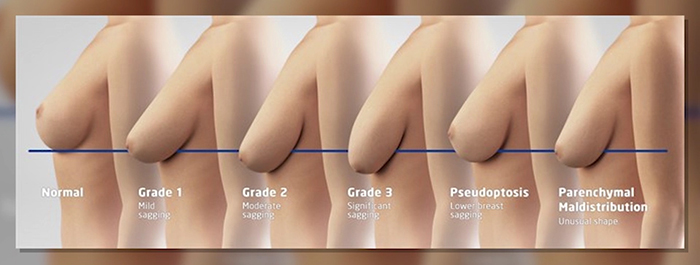The goal of any successful breast surgery procedure is harmony. Every patient who comes in complaining about her breasts does so because she feels that her breasts are out of balance. It may be due to the fact that the breasts don’t have enough volume, the two breasts aren’t the same size, or the breasts droop or sag. It’s the job of the plastic surgeon to get to the root of the problem, and then come up with the best treatment plan to restore balance to your individual breasts.
Dr. Craig Colville of Toledo, OH discusses how he works with his patients to help them understand the harmonious breast and why it’s important.
What is the Harmonious Breast?
The first step of any breast surgery procedure must be deciding how to achieve a harmonious breast. What is a harmonious breast? “You want a breast that is lifted, not sagging, with a nipple that is in the right place for the projection of the breast mound,” explains Dr. Colville. A harmonious breast is one that’s first in proper relationship to the inframammary fold, or crease beneath the breast. You don’t want a breast that sits too low, hanging over the fold.
In addition, the nipple needs to sit in the proper place in relationship to your breast, and to the inframammary fold. It should be centered on the breast mound, facing forward, not down. Once you have that harmony, you can have a breast augmentation. However, if you don’t have that balance, and you put in a breast implant, you’re going to have a unsatisfactory outcome, and be unhappy.
How to Achieve a Harmonious Breast?
Dr. Colville started using the term “the harmonious breast” because patients would come in to his office confused about which procedure, exactly, they needed to create the breasts that they wanted. Types of breast surgeries include:
- breast augmentation
- mastopexy, or breast lift
- breast reduction
- combination of the above
One of the most important aspects of a plastic surgeon’s job is really listening to what bothers patients about their body contour. For example, patients will often come in unhappy about their “deflated” breasts. They think that a breast implant will fix the problem. However, deflation is typically due to a combination of volume loss and sagging. A breast lift is actually the procedure that will restore the breasts to their proper position. Sometimes, the patient’s natural breast tissue is enough volume for the newly reshaped breast. Other times, the patient will also need a breast implant.
Importance of 3D Imaging & Photos
A picture really does speak 1,000 words when it comes to helping patients understand why they need a specific procedure. Dr. Colville uses Vectra 3D imaging to show his patients what he means by the harmonious breast. With some patients, the nipple sits in the proper position on the breast mound, but the whole mound hangs two inches below the fold. The patient knows that she doesn’t like her breasts, but she isn’t exactly sure what’s wrong. Things look OK when she is standing still, but when she moves or bends forward, the breasts aren’t so great.
The beauty of Vectra is that it can help illustrate exactly what a plastic surgeon can achieve with each procedure on your individual anatomy. Dr. Colville also uses before and after photos to point out the areas or landmarks that contribute to the harmonious breast. While he believes strongly that it is his job to educate his patients about their options and about what he thinks will and will not work, the final say is always up to the patient.
Volume Must Follow Harmony
Talking about volume before harmony is like putting the cart before the horse: it won’t get you where you want to go. However, once your breasts are proportionate, Dr. Colville will move on to the subject of a breast augmentation. This can also be an area where the patient needs to understand the role that her anatomy plays in her decision making process. For example, if a patient has a tight breast envelope, she can’t have a large implant. The dimension of the implant must fit within your breast envelope. Otherwise, you run the risk of destroying the natural boundaries of your breast which can have repercussions down the road.
Breast surgery patients generally want two things:
- a firmer, fuller breast
- more upper pole fullness
Today, there is a wide variety of implant options which makes individualizing the procedure to your anatomy easier than ever. There are implants with different projections, width and firmness, or feel. In thinner patients, Dr. Colville might go with an implant that is more cohesive so that there is less drift, wrinkling or chance of the implant being visible.
Every breast surgery patient wants to look natural. However, “everyone’s definition of natural is a little different,” says Dr. Colville. His goal is to deliver the look that is right for you, and this always starts and ends with harmony.




















Facebook
Twitter
Instagram
YouTube
RSS